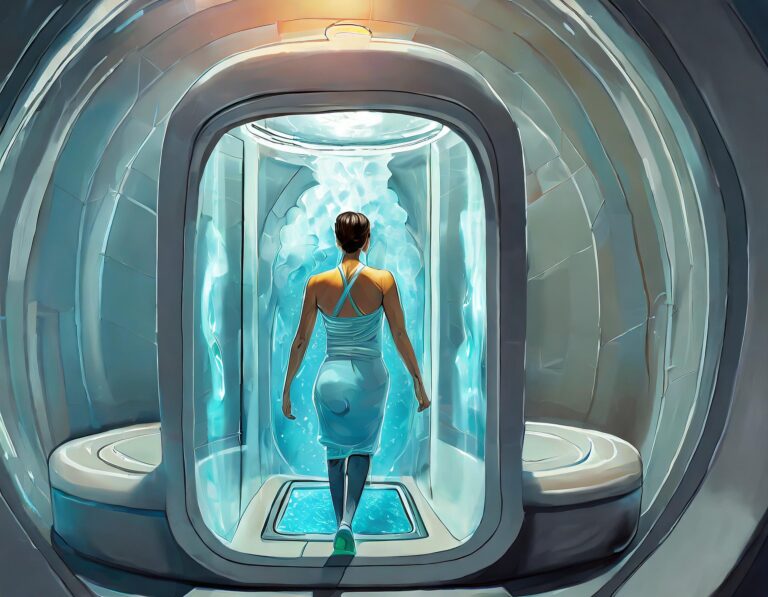What are the side effects of cryotherapy?
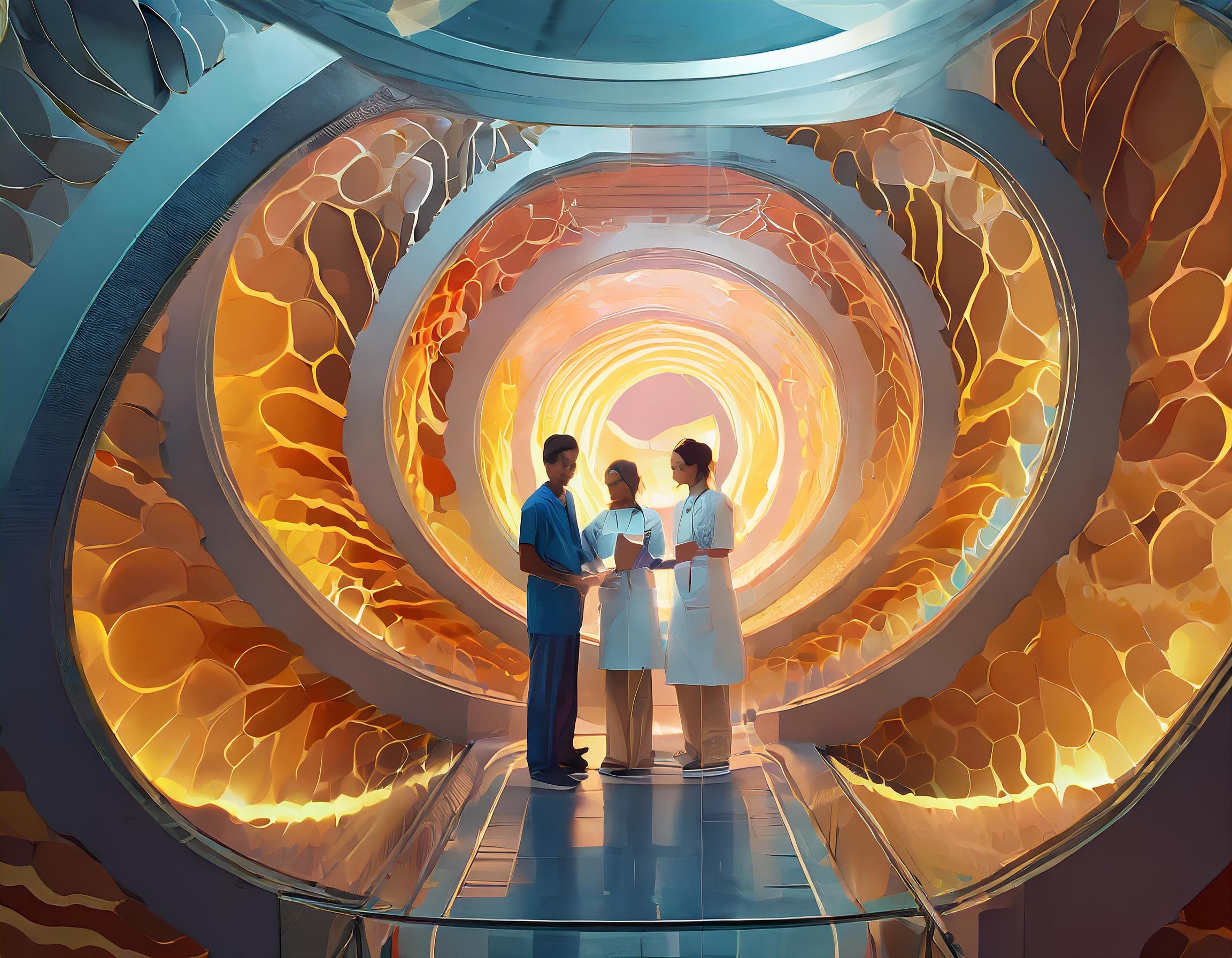
Cryotherapy is a treatment technique in which the body is exposed to cold temperatures for therapeutic effects. This treatment approach is effective for reducing inflammation, relieving pain, and improving recovery.
While cryotherapy offers significant health benefits, these benefits come with a cost of risks. Cryotherapy can cause side effects such as skin irritation, frostbite, or even more serious complications if you are not careful about it.
As with any treatment, information about the potential side effects of cryotherapy is important to ensure the safe use of this practice. Information about side effects will also help you make informed decisions and take necessary precautions during treatment.
In this article, we will cover some potential side effects of cryotherapy. We will also discuss some preventive measures to minimize the risks.
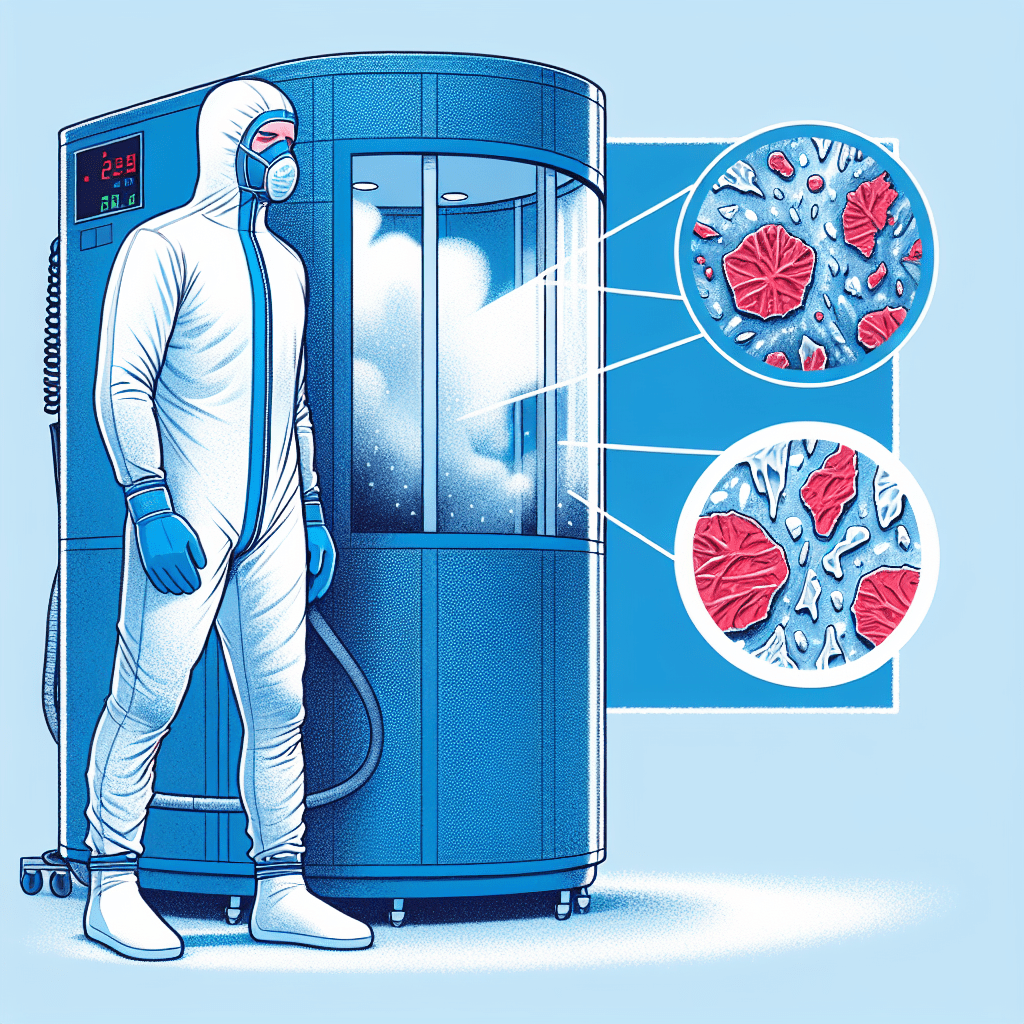
Potential Side Effects of Cryotherapy
Cryotherapy is a common treatment approach for a variety of conditions, such as inflammation or removal of abnormal body cells. This approach is quite effective but it can also cause some side effects.
Here are some potential side effects of cryotherapy:
Skin Irritation
Skin irritation is a common side effect of using cryotherapy, especially among people with sensitive skin. The extremely cold temperature in cryotherapy can cause redness and itching of the skin.
However, these effects of cryotherapy on the skin are temporary, and most recover on their own. In some severe cases of skin irritation, you may require medical management. In order to minimize the risk of skin irritation from cryotherapy, you must start the session with a shorter duration and see how your skin responds to cold.
Frostbite
While skin irritation can be common and is usually not serious, a more severe side effect of cryotherapy on the skin is frostbite. Frostbite is the death of skin tissues due to prolonged exposure to cold.
During cryotherapy, if the temperature is too cold or if the exposure is prolonged, the cold temperature freezes skin cells and blood vessels under it. Mild frostbite can be reversed by warming the tissues, but there is no recovery for severe frostbite.
Hypothermia
Your body is designed to work best at an optimal temperature of 37°C or 98.6°F. When the temperature drops critically lower than this temperature, it can disturb normal body functions, a state called hypothermia.
Exposure to extreme cold, such as during the whole body cryotherapy sessions, can cause significant heat loss from the body and can lead to hypothermia. Another phenomenon that promotes hypothermia during cold exposure is cold-induced vasodilation.
You can experience cold-induced vasodilation during full-body cryotherapy sessions, which can contribute to the risk of hypothermia.
Respiratory Issues
The extremely cold temperature in cryotherapy can cause respiratory issues, especially when you inhale very cold air. Studies show that airways are sensitive to cold air and can trigger symptoms such as coughing, shortness of breath, and wheezing.
If a person is already suffering from respiratory conditions, such as asthma, cryotherapy can worsen the symptoms. To prevent respiratory issues from cryotherapy, you must avoid direct inhalation of extremely cold air and monitor your respiratory system during the treatment session.
Cardiovascular Stress
Cryotherapy, especially whole-body cryotherapy, significantly increases stress on the cardiovascular system. When your skin experiences the cold, your body initiates vasoconstriction or narrowing of blood vessels. This can lead to increased heart rate and blood pressure.
When your body warms again after cryotherapy, the blood vessels dilate, causing a sudden drop in blood pressure. This cycle of vasoconstriction and vasodilation puts stress on your heart. This stress is more risky for people who already have heart conditions, such as hypertension.
Nerve Damage
One of the less common but possible side effects of cryotherapy is nerve damage. When you experience numbness, tingling, and pain in the treated area, the reason for this is the effect of cold on nerve fibers.
While shorter exposures and less cold temperatures don’t cause permanent nerve damage, prolonged exposures to freezing cold temperatures can cause permanent nerve damage. Individuals who already have problems related to the nervous system are at a higher risk.
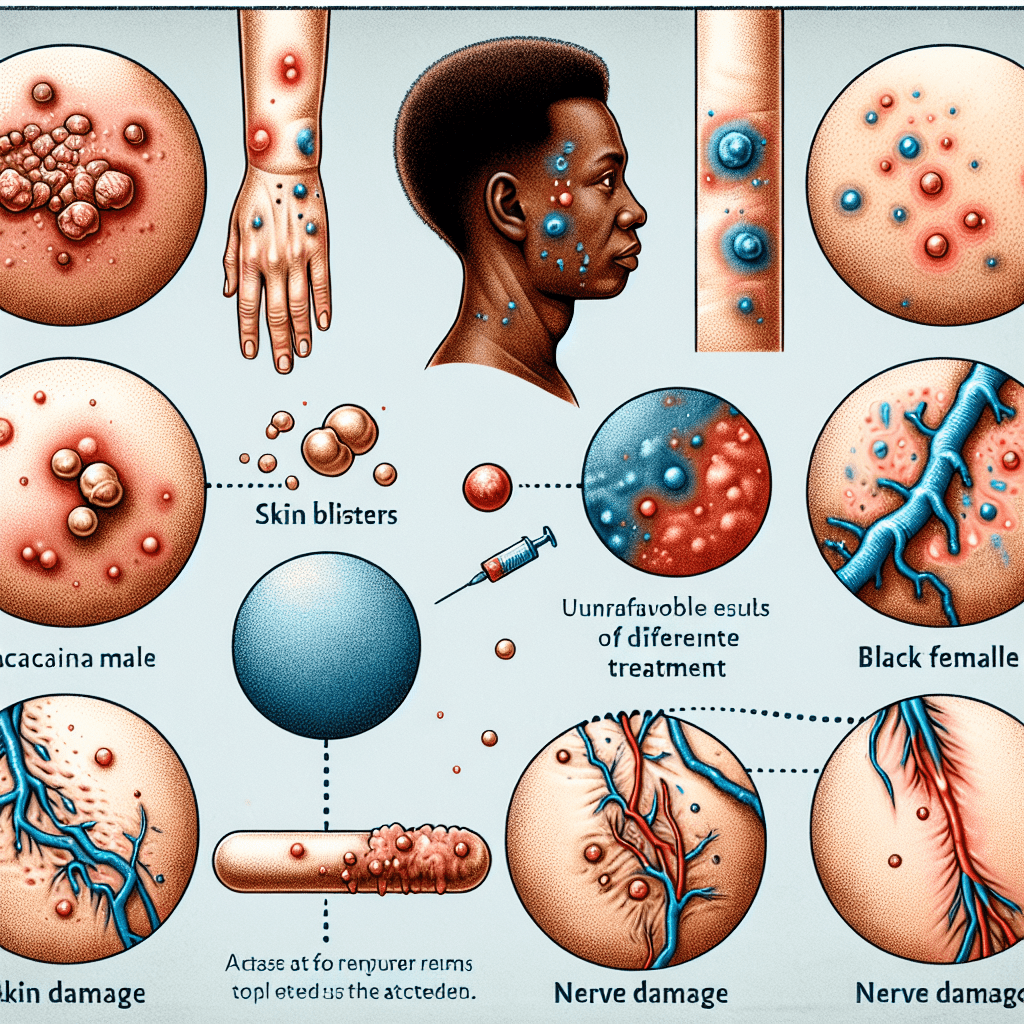
Long-term Risk of Frequent Cryotherapy
Most of the side effects of cryotherapy are due to the immediate effects of cold on the body. However, there are some side effects of cryotherapy that you may not experience from once-in-a-while sessions and are limited to long-term use.
Here are some side effects of long-term cryotherapy use:
Skin Discoloration
Long-term use of cryotherapy can cause skin discoloration. This is because extreme cold temperatures can disturb the distribution and function of skin pigment cells called melanocytes.
Cryotherapy can result in lighter — hypopigmentation — or darker patches — hyperpigmentation — on the treated area. These color changes can be temporary, or in some cases, they can be permanent.
Blood-Related Changes
Repeated use of cryotherapy can trigger different blood-related changes. Although the risk of blood-related changes from cryotherapy is lower, they can occur.
By increasing blood pressure, repeated cryotherapy can cause blood vessels to leak and blood to accumulate outside the vessels. This condition is called hematoma and you may experience pain, swelling, or bruises as symptoms.
Studies show that cryotherapy can also promote the formation of blood clots in the blood vessels. This condition is called thrombosis which can disturb the circulatory system and lead to severe complications.
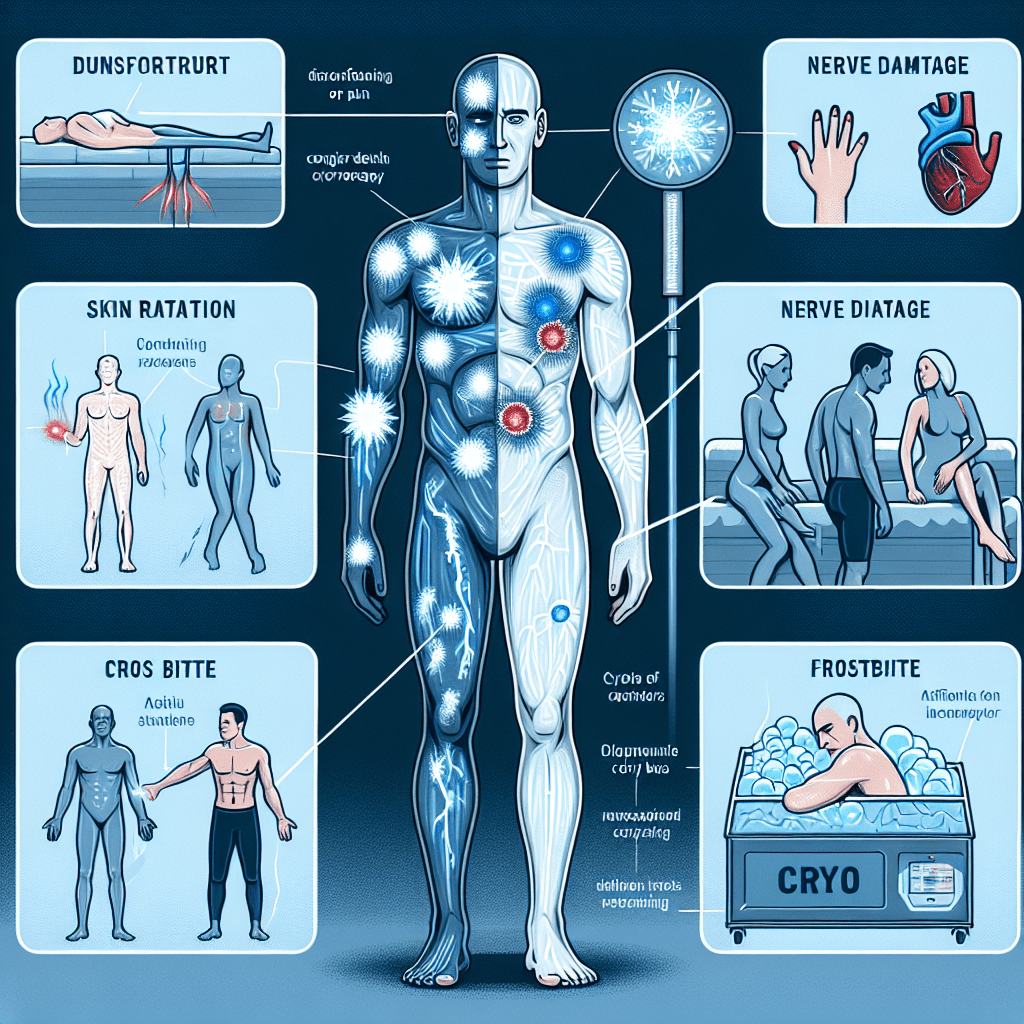
Safety Precautions To Minimize Side Effects
Cryotherapy is a great treatment option for a number of skin conditions including abnormal cell growths. However, safety precautions are important to prevent the risk of side effects and effective results.
Here are some simple steps that you can follow before, during, and after cryotherapy to reduce the risk of side effects:
Pre-session Preparation
The first and most important thing you need to do is mentally prepare your mind to experience the cold. Secondly, make sure that you are not suffering from any health condition that can worsen from cryotherapy, such as cardiovascular problems.
Wear appropriate clothing such as gloves, socks, and underwear to protect the temperature-sensitive areas of your body. Also, make sure to avoid using any lotion or oil on the treatment site as it increases the risk of frostbite.
Precautions During the Session
Precautions during the cryotherapy session include being mindful about the temperature and duration of the session. Limit the session duration as per the feedback of your body in response to the cold.
If it’s your first session, start with less extreme temperatures and shorter durations to analyze how your body responds to cold. Also, limit the frequency of sessions to minimize the risk of side effects.
Following these guidelines during the session prevents overexposure to the cold and protects the body from skin irritations and respiratory problems.
Post-session Care
After a cryotherapy session, avoid sudden exposure to warm temperatures such as hot showers. Instead, let your body warm gradually from the heat of the surrounding environment. This is because sudden temperature changes can stress the cardiovascular system.
After the therapy session, make sure to moisturize your skin as cold increases dryness. However, avoid using moisturizers with fragrances and other harmful chemicals as they can irritate the skin.
At last, monitor your physical and mental well-being after the session and immediately report to your doctor if you experience any serious changes in your body.
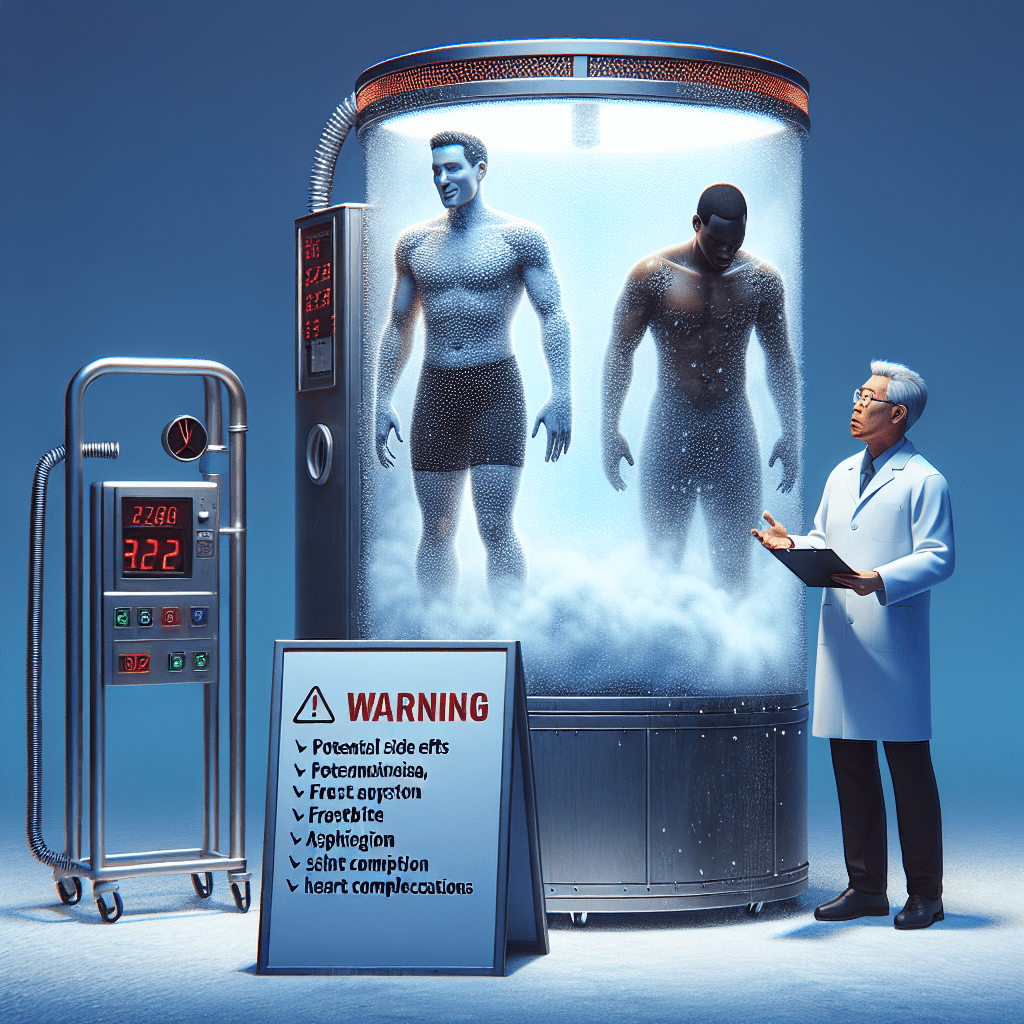
Key Takeaways on Cryotherapy Side Effects
Cryotherapy is a treatment approach for many skin conditions and the disposal of abnormal cells in the body. However, like any other treatment approach in the medical practice, cryotherapy also has potential risks.
Some potential side effects of using cryotherapy include skin irritations, frostbite, respiratory problems, and cardiovascular stress. This risk of side effects is significantly higher in people with underlying health conditions, such as cardiovascular problems.
However, you can lower the risk of adverse effects of cryotherapy by following recommended guidelines and safety measures. Always consult your healthcare professional before trying cryotherapy to ensure it’s safe for you.


